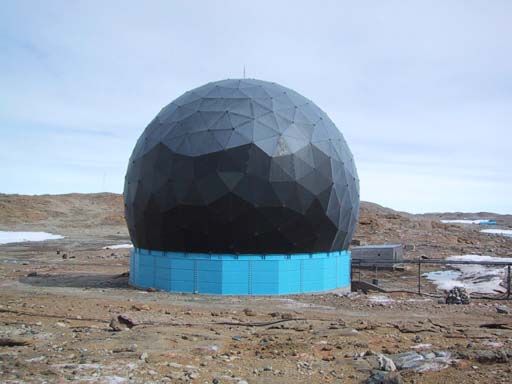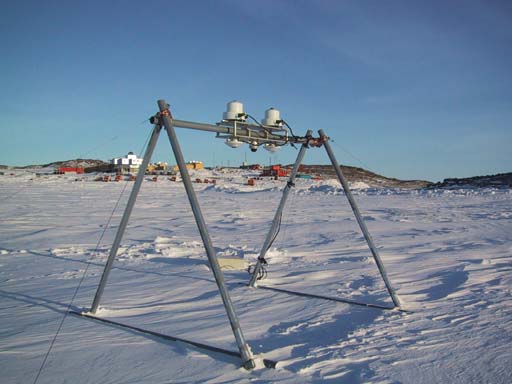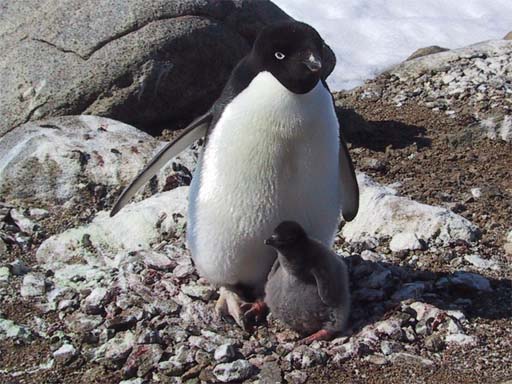 Feb. 12, 2003
Feb. 12, 2003
Summer in the Antarctic
This image shows the Antarctic Continent in summer season captured by
AMSR on January 29, 2003. Channels of 18-GHz vertical, 36-GHz horizontal, and 36-GHz vertical polarization were used. The color in this image differs from that is seen by human eyes. Areas of orange color around the continent correspond to sea ice. Sea-ice covered area in the Antarctic Ocean extends to approximately 20-million square kilometer in winter season, and is reduced to about five-sixth in summer season. This image is capturing sea ice remaining just around the continent, which is the typical appearance in the summer Antarctic Ocean. Due to its high altitude, yearly average of air temperature over the inland plateau is lower about 40 degrees centigrade than that of coastal region. There are also areas of bare ice sheet over the plateau. These areas are probably indicated by green color (gray circle at the center of the image is the region where
AMSR is not able to observe).
AMSR is capable to acquire the entire image of the Antarctic region every day though non-precipitating clouds.

Letter from the 43rd wintering party of the Antarctic
| 1 |  | 2 |  |
| 3 |  | - Radome protecting receiving antennas from snowstorm
- Preparing simultaneous measurement of solar insolation with GLI
- Adelie Penguins building a nest in Syowa Station.
|
At Syowa Station, receiving test is being conducted in preparation for acquiring the data from Midori-II (ADEOS-II). In addition, simultaneous measurement of solar insolation with
GLI observation is being prepared. As summer season is coming, daily average of air temperature often exceeds 0 degree centigrade at Syowa Station. Adelie Penguins building a nest in Syowa Station safely hatched their baby birds and are trying hard in raising them.
This is a merged image of January 29, 2003 with
AMSR data, and cloud image from the infrared observations by Japanese and foreign meteorological satellites (infrafed data provided by Japan Weather Association).
The red areas indicate strong precipitaion areas in the clouds by the microwave observation.

Earth Observation Research and application Center, Japan Aerospace Exploration Agency
JAXA EORC
ALL RIGHTS RESERVED.






